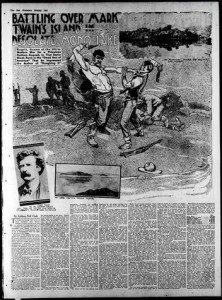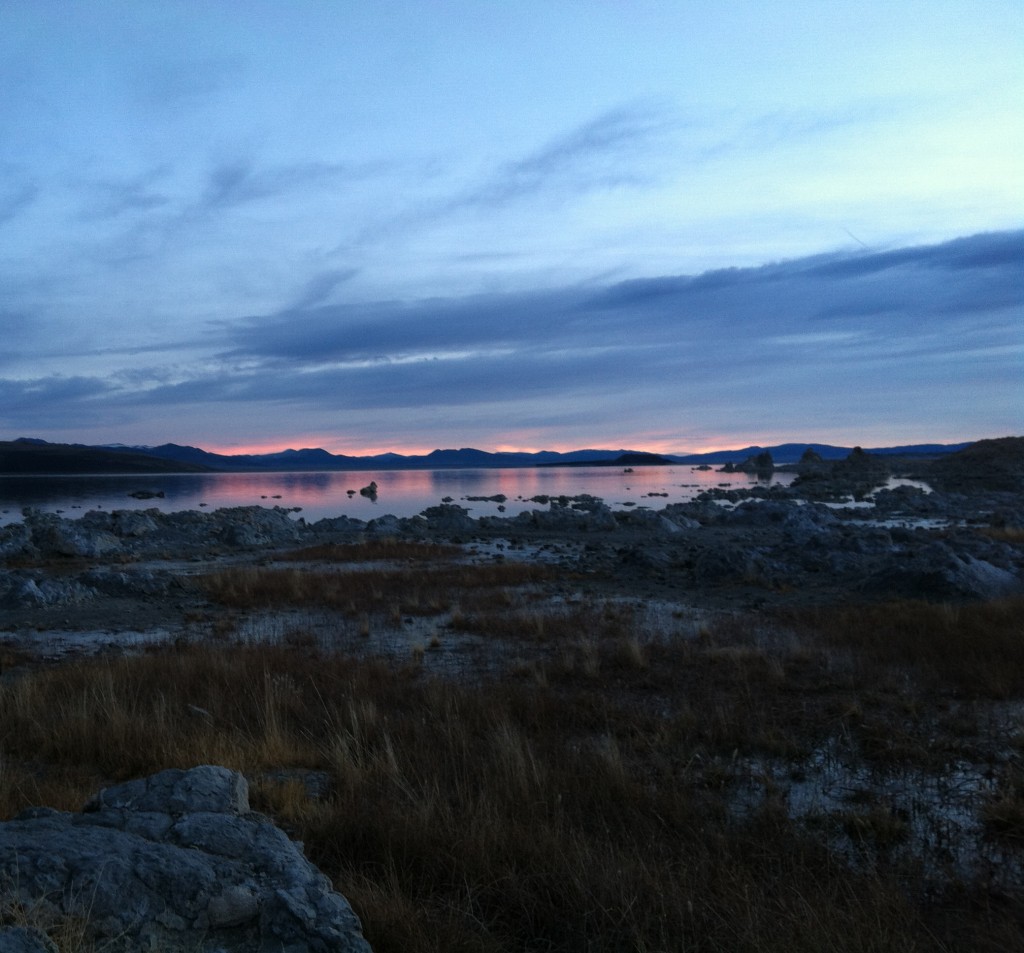

This post was written by Barbara Ball, 2015 Information Center & Bookstore Manager.
Want to leap into your time machine and take a trip back to Mono Lake 100 years ago? If you go to this Library of Congress web page, you can do this without the probable jet lag or the awkward need for period-specific clothing that an actual time machine might provide.
A few years ago, the Library of Congress started Chronicling America, a massive project to scan and upload full-text newspapers from 1836-1922 to the Internet so that they are freely readable and searchable by all. Chronicling America is an astounding resource. I love going there and researching places I’ve been, famous people I’ve heard of—to see how they were regarded in their own time period—or even to research ancestors or landmarks like Mono Lake.
Full of curiosity, I go to the website and type in Mono Lake. The first article, from the San Francisco Call of August 4, 1912, talks about the discovery of radium on Negit Island (spelled “Negrit” here). This article doesn’t exactly cast a favorable eye on Mono Lake. Entitled, “Battling Mark Twain’s Island In Desolate Mono Lake,” it describes the lake as “that forbidding waste known as the Dead Sea of America: Mono Lake.” This article talks about the discovery of radium on Negit Island and a “thrilling battle between rival contenders for possession of a rich mineral deposit,” with shots fired, boats sunk, and survivors swimming through water that is “nearly pure lye” to survive. Wow! Here is action/adventure at its finest.
Or, to take a more scientific look in your window through time, a 9/19/1897 article from the Los Angeles Herald discusses a scientific study to see if the gulls of Mono Lake have a better homing instinct than pigeons, and therefore might be better choices for messenger birds. The article’s conclusion? “It has abundantly demonstrated that the gull as a messenger bird is greatly superior to any of the feathered tribe outside of its species.”
Another observation on Mono Lake from the April 8, 1859 Cambria Freeman describes Mono Lake as “an unrippled sea.” Why unrippled? The article speculates that “so dense and sluggish is the water rendered through supersaturation with various salts and other foreign matter that only the strongest winds raise a ripple on its surface.” I look through the window here at the Mono Lake Committee and marvel at the lake’s often mirror-like properties. Over 100 years ago, people were noticing this very same thing.

Want to learn more about Mono Lake’s long history of scientific discovery and resource plundering? Go to Chronicling America and do a search. The search term (whatever you put in—in this case “Mono Lake”) is highlighted in each of the found newspaper articles, so you can see which articles mention it the most.
As we examine the past, we can learn things that help us look to and plan for the future. May Mono Lake continue to be a beautiful, life-providing mirror for all Eastern Sierra visitors—birds, bugs, humans, and others—for millennia to come.

Very nice photograph. I have seen very few square photographs of Mono Lake that were good…but yours is. Nice colors! Makes me miss it even more!